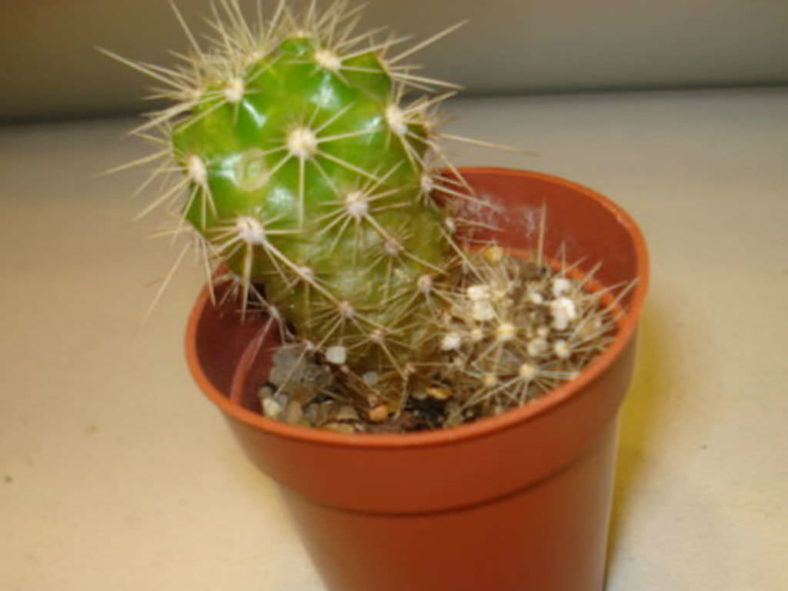For a typical leafy plant, you keep the soil moist and do not skimp on watering for good growth. However, when dealing with succulents, different rules apply. Succulent plants store extra water in their leaves, roots, or stems to survive prolonged heat and no rainfall. If you are overly generous, they fill up their water storage tissues, become bloated, and can actually split open. Soil kept too wet prevents air from reaching the roots, and they die, leading to soft rot.
Diagnosing Overwatering
The main cause of potted plant death is overwatering, and this is especially true for succulents. You can usually tell an overwatered succulent by its puffy-looking stems or leaves. The plant can also look generally unhealthy. Reduce the watering and see if the plant responds. When the roots die from too wet soil, the plant can look like it needs water, with shriveled leaves and no new growth. This is because it needs water but has no live roots and can not take water up. Unpot the plant and check for healthy roots. If the roots are alive and the soil is dry, give the plant water, and it should respond. Your succulent is in trouble if the roots are dead and the soil is wet.
Treating Overwatered Succulents
If rot organisms have invaded the succulent plant stem through the roots and mushy areas are present, you can amputate the rot if it is limited in occurrence. Use a sharp knife dipped in alcohol and excise the rotten tissue until all you see is clean. Put the treated plant to get bright light and good air circulation, let the wounds heal, then try rerooting it in the well-draining soil mix. Discard all infected materials, and disinfect the tools and work area. If the plant is mushy inside, discard it and the soil instead of composting them.

Good Watering Practices
Prevent overwatering by watching your succulents for growth cycles. When succulents grow, they thrive on thorough watering alternating with partial drying out of the soil. They do not use much water when dormant, and the soil needs to be drier. Most succulents grow in spring and summer, but some grow in winter. The top layers of soil will tell you when your succulent needs water. Put your finger in the pot and feel if the soil is dry or moist, 1 to 2 inches (2.5 to 5 cm) down in the pot. Do not water if you feel moisture. When plants are dormant, dry soil should extend halfway down the pot. For spiny plants, use a chopstick or a wooden pencil as a probe and check the moist soil tip of the particles. If you are in doubt, do not water the plant. Succulents can recover from underwatering, but you can not remove extra water from the plant.
Soil Mix
A well-draining soil mix goes a long way to keep from overwatering succulents. Use a commercial succulent potting soil mix or make your own, combining equal parts of an organic element such as compost or peat, coarse horticultural-grade sand, and a gritty element such as horticultural pumice, perlite, or lava fines. To help the potting mix dry out more quickly, give succulents a pot they can comfortably fit in, plus 1 inch (2.5 cm) extra space. Repot the plants yearly as they grow into just the next pot size.
Source: sfgate.com
Links
- Succupedia: Browse succulents by Scientific Name, Common Name, Genus, Family, USDA Hardiness Zone, Origin, or cacti by Genus